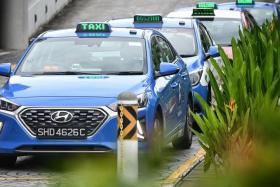New Mandai wildlife crossing to be up by 2019
Awareness training and shepherding plan among measures to reduce impact on native wildlife
To reduce the impact on native wildlife found in the natural forests surrounding an upcoming eco-tourism hub in Mandai, a new Eco-Link bridge will be built over Mandai Lake Road.
The wildlife crossing, which will measure 44m-wide, 110m-long and up to 9m in height, will allow animals to safely get across parts of the Central Catchment Nature Reserve. It will be completed by 2019.
The nature reserve is currently split into two parts by Mandai Lake Road, which leads to the Singapore Zoo and its neighbouring wildlife parks.
The rejuvenation project also includes two new wildlife parks, the Rainforest Park and the relocated Bird Park, which were announced earlier this year and will join the existing Singapore Zoo, Night Safari and River Safari cluster by 2023.
In a press briefing yesterday, developer Mandai Park Holdings (MPH) also announced that its workers and contractors at the project site will have to undergo biodiversity awareness training to recognise and deal with sightings of local wildlife to ensure appropriate behaviour towards the wildlife.
MPH said construction of the Eco-Link bridge, similar to the one spanning the Bukit Timah Expressway, started earlier this year and will create a conducive and sheltered passageway for animals.
RECOMMENDATIONS
The bridge, which was among the recommendations in the Environmental Impact Assessment report released in July last year, will not be accessible to the public.

Mandai Park Development's senior vice-president and project lead Philip Yim said a wildlife shepherding plan will also be implemented to carefully divert wildlife away from sites before hoardings are put up for construction to begin.
Even as construction is underway, artificial crossing aids such as poles and rope ladders will be put up on Mandai Lake Road to help arboreal and gliding animals such as the Malayan colugo and the slender squirrel cross safely, said MPH.
Wildlife specialists and arborists will also inspect trees, including for active bird nests, animals living inside or burrows, before any tree transplanting or removal can be done, it added.
Its chief executive officer, Mr Mike Barclay, said: "It is our vision for the future precinct to continue providing conducive habitat corridors for local wildlife to find shelter in our parks and to connect with the adjacent nature reserve."
Mr Alan OwYong, a committee member of the Nature Society (Singapore) bird group, said: "Any additional help for animals and birds to move safely across (the nature reserve) is good, although we will be able to tell how beneficial it is only when it is completed and we have a chance to do a survey post-completion."
Get The New Paper on your phone with the free TNP app. Download from the Apple App Store or Google Play Store now



